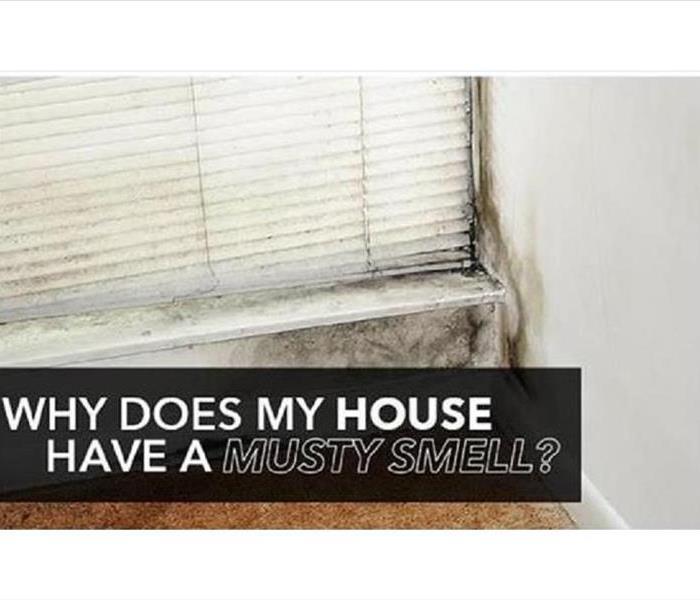What is that smell?
4/1/2020 (Permalink)
What’s that smell?” A wife asks her husband after returning from a long day of work. “Did you leave wet clothes out again?” she says as she checks the bathroom and hamper where the odor seems to be emanating from. The thought comes to her mind: could it be mold? If you’ve experienced this scenario in the past, here are some places you may want to check.
Dishwasher
There are two connections under each dishwasher that have the potential for mold and mildew growth. 1st the water supply line and 2nd the discharge hose. The Water Supply line needs to be lubricated and properly tightened periodically. The discharge hose involves a hose made of rubber and a clamp. The hose can wear out over time and the clamp can loosen. Check these if your dishwasher is over three years old or you notice an odd smell when opening the door.
Ice Maker
Moving a fridge can weaken or break the water line connection to the ice maker causing leaks behind the fridge. Check the connection periodically to ensure that no leak has formed.
Washing Machine
Remember, even the smallest amount of water creates the perfect environment for mold growth. All rubber washers need to be tight to prevent leaks. Also, regularly check any hose that supplies or drains water from the washing machine for cracks or leaks.
Hot Water Heater
Most states have laws requiring overflow pans to be installed so that the water is drained outside. Check that your water heater is properly installed. If your home contains an older model water heater, make sure that an overflow pan has been properly added to decrease chances of mold growth.
P-Traps
Under every sink in your home is a “P-Trap” which prevents sewer gases from entering inside. They are often made out of PVC, which has a tendency to expand and contract while in use. This causes the P-Trap connection to eventually loosen over time, allowing water to leak onto the base of the cabinet. Use Teflon tape to seal the P-Trap and check them periodically. Take care to not over tighten the PVC pipe which can cause it to crack.
Toilet Connections
The most common place on a toilet where mold growth can be found is at its base. The grout around the base serves as a filter between the bowl and floor to keep it from rocking, thus preventing the the wax ring from being compromised and allowing mold to grow.
Shower Door
Mold growth at the base of the tub may be from a leaking or improperly installed shower door. The door needs caulking on all three rails--the two side rails and the bottom rail--to ensure water does not leak out.
Tub
Cracks in the caulking allows for water to drip down underneath the tub, causing mold growth. If you have a slab floor, there is an even greater risk for mold growth as holes in the concrete will hold onto moisture and can allow moisture to come from the bottom up. These areas can be filled with liquid tar or expandable foam to seal them.
Exterior Hose Base
A poor connection, missing rubber washer or loose hose can result in water spraying out. This can cause the water to enter cracks or other inaccessible areas where mold can grow. Make sure all holes, gaps or areas around every outdoor water connection have been properly caulked and sealed.
Outdoor Sprinklers
Keep sprinklers away from the house and make sure they spray away from any structure. Also remind children or teens that they may water the garden or use sprinklers to play in, but not to spray the house directly.
By taking proper precautions and being vigilant with upkeep, you can avoid mold growth or catch it before it spreads. If you do suspect mold in your home or office call SERVPRO of East Riverside City for a courtesy inspection.

 24/7 Emergency Service
24/7 Emergency Service
